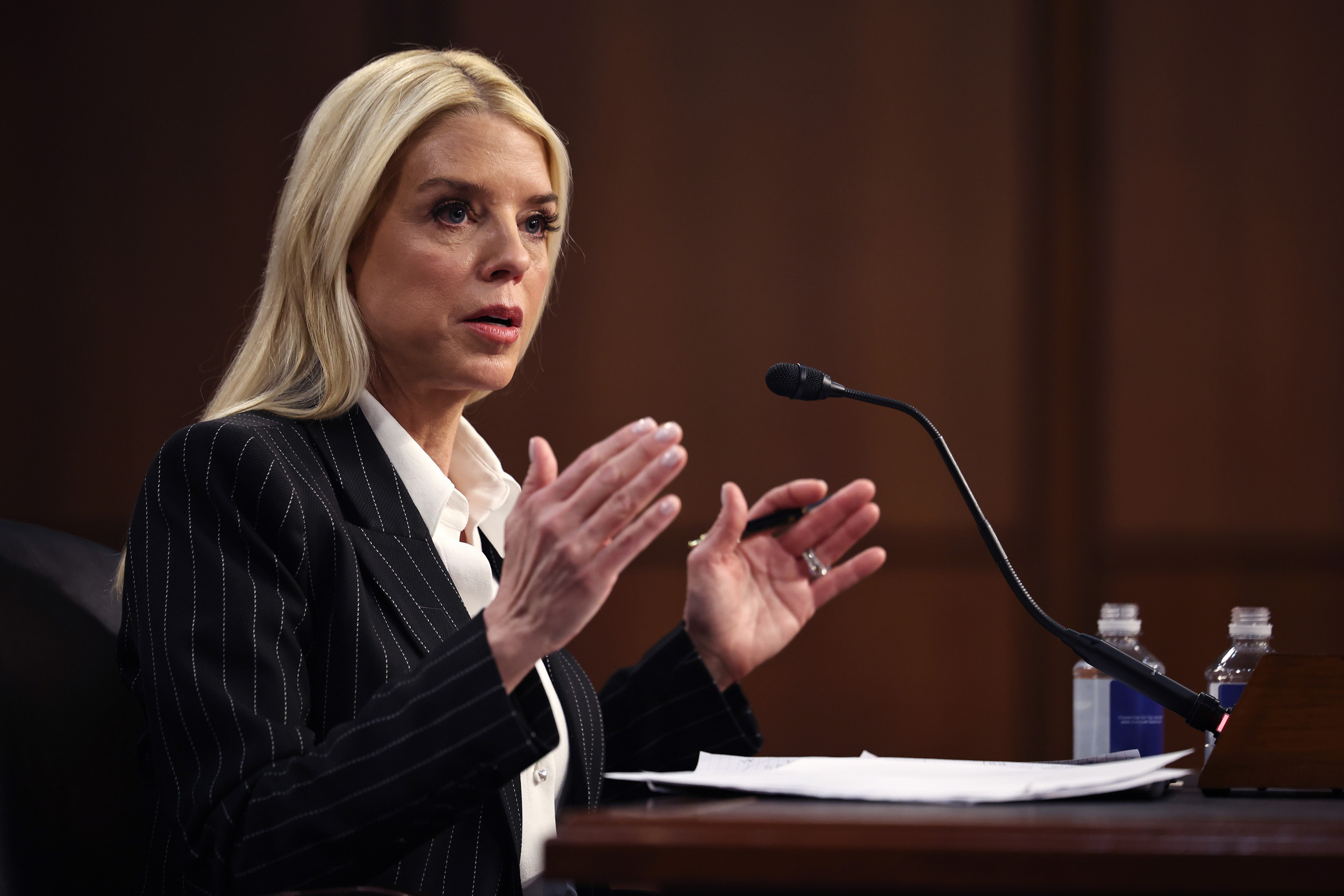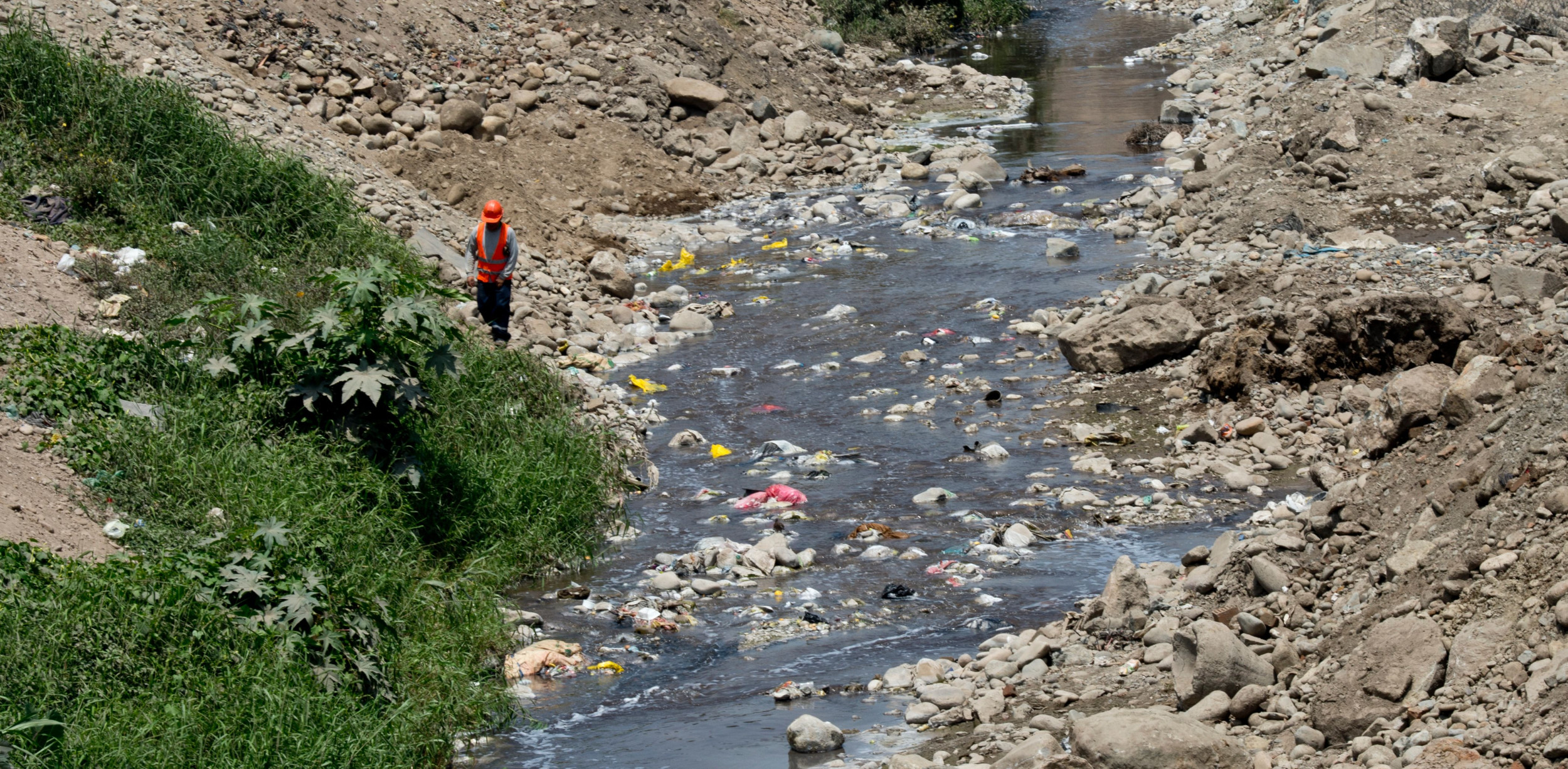The "flood the zone" strategy seemingly being used by the Trump administration, which has resulted in a relentless onslaught of new directives and policy announcements, is drawing renewed scrutiny during the beginning of his second term.
The term was reportedly coined by former Trump White House chief strategist Steve Bannon in 2018 when he said the best way to deal with media was to "flood the zone."
Newsweek reached out to Steve Bannon and the White House for comment on Thursday afternoon for comment.
Why It Matters
The strategy from Bannon was to continually attempt to overwhelm opposition from Democrats as well as the media through a flurry of moves that would be difficult to respond to all at once.
Trump appears to have embraced the strategy in his second term, issuing a seemingly relentless number of policy announcements and signing a large number of executive orders in the first weeks of his second administration.

What To Know
Notably, Bannon is not the one pushing the version of this strategy in the current administration. Instead, Stephen Miller, the deputy White House chief of staff for policy, has taken the lead in the approach to overwhelm the opposition while moving quickly on the president's agenda.
Trump signed 46 executive orders by the end of January, according to the Federal Register—already a quarter of the total number of executive orders he signed in his first administration, and a third as many as those signed during the Biden administration. The policies cover a range of topics, from transgender rights to tariffs on neighboring countries to tech initiatives—and numerous others.
The Department of Government Efficiency (DOGE), headed by billionaire Trump adviser Elon Musk, has also moved at a lighting pace to embed his personnel at departments and agencies across the federal government including the U.S. Treasury and the U.S. Agency for International Development (USAID), among others.
Miller has helped manage this intense execution of the strategy, spending most of the time between November 5, 2024, and January 20, 2025, drafting the various executive orders and policy announcements.
Bannon, who is a prominent right-wing podcaster, first mentioned the strategy during an interview in 2018 with Blomberg Opinion columnist Michael Lewis.
Bannon, in that interview, said that he viewed the media as "the real opposition," and that "the way to deal with them is to flood the zone with s---." The comment has surged to the forefront of discussions as the Trump administration appeared to embrace it at the start of the second White House term in January 2025.
Bannon was convicted in 2022 of defying a subpoena to testify in front of the January 6 House Select Committee, which led an investigation into the riot at the U.S. Capitol on January 6, 2021. He was imprisoned for four months in 2024 and was released just a week ahead of the 2024 U.S. presidential election.
What Is 'Flooding The Zone'?
Bannon articulated the strategy more clearly in 2019 during an interview with PBS program Frontline, in which he said: "The media can only—because they're dumb and they're lazy—they can only focus on one thing at a time."
"And all we have to do is flood the zone," Bannon said. "Every day we hit them with three things, they'll bite on one, and we'll get all of our stuff done. Bang, bang, bang. These guys will never—will never be able to recover. But we've got to start with muzzle velocity. So it's got to start, and it's got to hammer," he continued before being cut off.
A Vox article from 2020, explained "flooding the zone" as also meaning contaminating the information ecosystem with misinformation expressly to create confusion and distrust between the audience and the news media.
How Does Trump 'Flood The Zone'?
The New York Times last month examined this strategy, noting that while Bannon and Trump allies have discussed the plan in the past, the current execution is "bigger, wider and more brutally efficient."
"As President Trump begins his second term, he has enacted his agenda at breakneck speed as part of an intentional plan to knock his opponents off balance and dilute their response," Times reporter Luke Broadwater wrote, adding that the flood has a "disorienting effect" that makes it difficult for Democrats to "catch their breath."
Democratic Representative Jamie Raskin of Maryland, the ranking member on the House Judiciary Committee, told the Times that he's experiencing so much whiplash from the many fires he's trying to put out, describing it as "sensory overload" that "just doesn't stop."
New York Times Commentator and journalist Ezra Klein this week tackled the topic, particularly the fact that "focus is the fundamental substance of democracy" and "particularly the substance of opposition."
"What Bannon wanted—what the Trump administration wants—is to keep everything moving fast," Klein wrote. "Muzzle velocity, remember. If you're always consumed by the next outrage, you can't look closely at the last one."
What People Are Saying
Ty Cobb, a member of the White House legal team during the first Trump administration, told The Washington Post: "It's a naked power grab consistent with what Trump's advisers have persuaded him to do, which is to flood the zone with as much unconstitutional activity as possible, with the hope that they get away with some or all of it."
Clayton Weimers, Executive Director of Reporters Without Borders (RSF) USA, wrote in a Newsweek op-ed: "Trump is also rolling this approach out at the federal level. Steve Bannon's infamous strategy during Trump 1.0 was to "flood the zone," keeping the public on their heels with a constant stream of fresh outrages. Today, the strategy is being used on a much larger scale. The goal is not just sensory overload, it's an attempt to make it impossible for any of us to really understand what's going on here."
"All these actions work together to block out the sun, making our government less transparent and less accountable. Americans need to work harder to peer through all his deceitful haze. After all, democracy depends on the sunshine," Weimers added.
Democratic Representative Gerry Connolly of Virginia, the ranking member on the House Oversight Committee, wrote on X, formerly Twitter: "Trump is flooding the zone with one outrageous plan after another in the hopes we will balk at the sheer size and scope of his efforts. But we will not relent now. This is the time for all of us who have chosen service to fight back."
Republican Representative Chip Roy of Texas, last year tied the term to immigration, accusing Democrats of "deliberately 'flooding the zone' with foreigners in order to 'wipe the slate away from the core values that this country was founded upon.' "
What Happens Next
Democrats have begun to organize pushback to Trump and his administration's policy blitz, holding several press conferences this week to lay out their demands and call for explanations.
Democratic lawmakers and governors have also launched lawsuits against some of the broader policies Trump has launched, which have led to injunctions against his attempt to end birthright citizenship and trying to freeze federal grants and loans as the administration seeks to cut federal spending.














)





 English (US) ·
English (US) ·